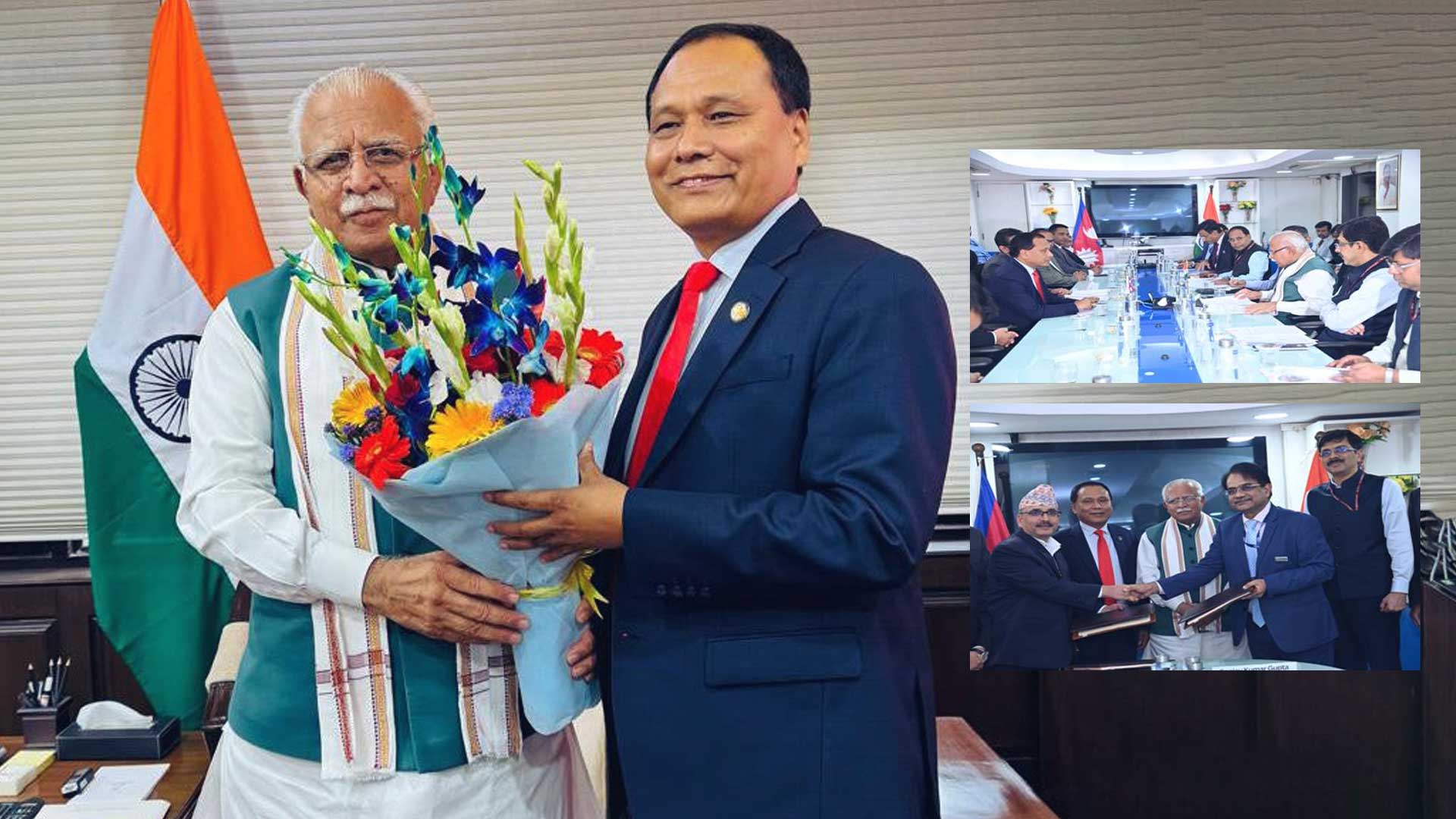Nepal–India Power Push: Kulman Ghising Seals Two Cross-Border Energy Deals in Delhi

Kathmandu — Nepal and India have entered a new phase of energy cooperation after Nepali Energy Minister Kulman Ghising and Indian Power and Housing Minister Manohar Lal met in New Delhi on Wednesday, finalizing two major high-voltage transmission agreements expected to transform the region’s electricity trade.
In a meeting focused on long-term collaboration, both sides reviewed hydropower development, cross-border electricity trade, and regional grid integration. The Nepal Electricity Authority (NEA) and India’s state-owned POWERGRID signed Joint Venture and Shareholders’ Agreements to establish two joint venture entities—one in each country—for the construction of high-capacity 400 kV transmission lines: the Inaruwa (Nepal)–New Purnea (India) and Lamki (Dododhara, Nepal)–Bareilly (India) corridors.
Once completed, these twin transmission links will significantly expand the power exchange between Nepal and India. For Nepal, it marks a breakthrough in exporting surplus hydropower to the regional market, while India gains a cleaner, renewable supply that aligns with its energy transition goals.
Minister Ghising hailed the deal as a “historic step forward in realizing Nepal’s vision to deliver clean power across South Asia.” His Indian counterpart Manohar Lal echoed that sentiment, saying, “This cooperation will redefine South Asia’s energy map.”
Energy analysts in Kathmandu have called the move a “strategic pivot” for Nepal. If executed on schedule, it could balance the long-standing trade asymmetry and position Nepal as a key regional power exporter. However, some economists have cautioned that over-dependence on India might carry long-term diplomatic and regulatory risks.
Both sides agreed to work out clear operational frameworks on technical standards, financing models, and regulatory oversight. The NEA said the Inaruwa–Purnea line will reinforce Nepal’s eastern grid, while the Lamki–Bareilly line will strengthen the western corridor, ensuring energy stability on both sides of the border.
This agreement takes Nepal–India relations to a new level of energy diplomacy, where economics—not politics—appears to be defining the next chapter.
Once operational, these transmission lines could bring Nepal’s long-held dream of “selling water for wealth” closer to reality.




![From Kathmandu to the World: How Excel Students Are Winning Big [Admission Open]](https://www.nepalaaja.com/img/70194/medium/excel-college-info-eng-nep-2342.jpg)
